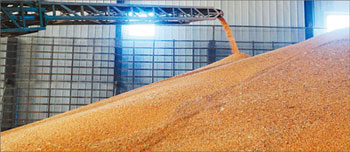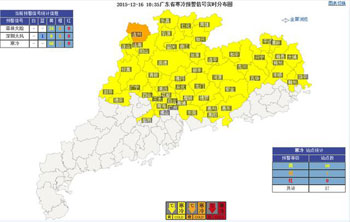How to interpret the industrialization of agricultural development is controversial.
Original title: agricultural Development: reading "the way of Industry"

Observation on the growth of Maize at Seedling stage in Changzhi County, Shanxi Province (data chart)
Changzhi County is the corn growing area of Shanxi Province.
Because of the no-tillage method, the cornfields here can be planted in 3 days, and the autumn harvest only takes 3 to 5 days, and the yield per mu has increased from about 300 jin in the past to more than 1000 jin at present.
After the contracted production reaches the household, there is very little land for each household, and many farmers do not feel the need to spend the whole year farming, so they only go home during the spring and autumn harvest, and the rest of the time they choose to go out to work.
Even at the beginning of winter, most of the old people are still seen in the fields here.
"this phenomenon is precisely the result of the increase in agricultural productivity in China." Said Zhang Xiaode, director of Chinese Academy of Governance Ecological Civilization Research Center.
Does Chinese agriculture have higher production efficiency only by adopting American-style enterprise, capitalization and large-scale agriculture? In China, this is still a proposition that needs practice.
It is undeniable that agricultural modernization is a weak link in China at present. Under the premise of ensuring food security, an inevitable choice is to accelerate the transformation of agricultural development mode and the pace of technological innovation.
Developing modern agriculture in an industrial way is becoming a new formulation. So, how should agriculture learn from the experience of industry and avoid some of its disadvantages?
How to understand and use for reference
Rice field fish culture has a history of 2000 years in China. For example, in Qingtian, Zhejiang Province, the mutually beneficial symbiosis of rice and fish not only provides rich and diverse food, but also helps to protect agricultural biodiversity and farmland ecological environment.
"the combination of traditional ecological wisdom and modern science and technology is the direction of modern agricultural development." In an interview with our reporter, Min Qingwen, deputy director of the Natural and Cultural Heritage Research Center of the Institute of Geographical Resources of the Chinese Academy of Sciences, stressed.
To develop modern agriculture in an industrial way, in the view of this scholar who has a special interest in the protection of agricultural cultural heritage, its core should be to use science and technology in industrial development to arm agriculture and to use management means in industrial development to transform agriculture.
"the economic function of agriculture is often an aspect that people pay more attention to, but the ecological protection function, cultural inheritance function and social stability function of agriculture can not be ignored." Min Qingwen said.
The reality is that for China, where the mountain area is nearly 70% of the land area and the natural conditions are congenitally deficient, it is undoubtedly a scientific development path to emphasize measures in line with local conditions and the diversity of agricultural development modes.
The essence of traditional agriculture, such as rice-fish symbiosis, agroforestry, mulberry-based fish ponds, intercropping and intercropping, combined with modern information technology, biotechnology, management concepts and economic means, has developed into ecological circular agriculture. it will play an important role in realizing the transformation of agriculture from "non-point source pollution" to "ecological barrier".
In Zhang Xiaode's view, the practice over the past 30 years of reform has proved that the reason why China has maintained sustained grain growth for many years is precisely this mode that saves labor and does not need more full-time agricultural labor force. At the same time, it can absorb agricultural machinery and agricultural science and technology to the maximum and maximum cost.
At the same time, many scholars simply backwards according to the theory of scale effect, blaming the rural labor cost and low efficiency on the small-scale peasant economy with the family as the unit.
With regard to the development of agriculture by drawing lessons from industry, Zhu Qizhen, director of the Farmers' Research Institute of China Agricultural University, specially reminded us to pay attention to three points in an interview with our reporter.
First, we should respect the law of agricultural development. Theory and practice have repeatedly proved that the most effective form of agricultural organization is farmers, not factories. It is more efficient for farmers to work for themselves than for enterprises. Some problems in farmers' management can only be solved through system innovation, not at the expense of negating the family management system.
The way to overcome the disadvantages of small farmers is to develop family farms. The production of family farms is beneficial to learn from some industrial methods, such as mechanization, industrialization and industrial integration.
Second, the agricultural development mode of industry is mainly reflected in the prenatal and post-natal development of agriculture. Such as seed industry, chemical fertilizers, agricultural machinery manufacturing, pesticides and other agricultural means of production R & D and sales, as well as the storage, transportation, processing and marketing of agricultural products.
Third, a sound social service system is the most typical embodiment of industrial development of agriculture. Modern agriculture is no longer a small and comprehensive agriculture, an important development direction is to realize the scale of agricultural management based on family management through perfect social services.
For example, the socialized service of agricultural machinery can provide social services such as farming and harvesting for family farms and large contractors; professional organizations of plant protection can provide pest prevention and control services for farmers; grain storage and transportation services provide drying, storage and sales services for farmers.
The perfect social service of agricultural production embodies the professional division of labor and efficient standardized service, which is an important aspect of industrial service to agriculture.
Zhu Qizhen believes that the development purposes of agriculture and industry are different. What agriculture pursues is not the maximization of the interests of producers, but the needs of consumers, that is, national agricultural security, and the sustainable development of agriculture. Agricultural products are not general commodities that can be regulated by the market. "the mode of industrial development of agriculture cannot be understood blindly and mechanically."
Do not ignore the existing drawbacks
Because the development mode of agricultural industrialization with the goal of pro-capital and pursuing agricultural profit maximization has a direct effect on the deconstruction of traditional rural and small-scale peasant economy, the predatory development of land also brings problems such as the decline of land fertility, land pollution, food insecurity and so on. Since the 1980s, the West has begun to reflect on some disadvantages of the industrialized agricultural mode of production.
"I am opposed to the industrialized development of modern agriculture." In the face of the reporter's interview, Zhang Xiaode expressed his views bluntly. In fact, what he is worried about is the disadvantages that the development mode of agricultural industrialization is about to bring or has already brought.
China has made a lot of bold attempts in promoting land circulation and realizing large-scale operation by drawing lessons from the development mode of industry to develop agriculture. In Zhu Qizhen's view, we have gained a lot of experience, but at the same time, many problems have been exposed.
For example, to move for the sake of circulation. In order to accomplish the transfer task set by their superiors, or to force farmers to transfer land and artificially create farmers who have lost land, or to induce farmers to transfer land by raising land rent, the grass-roots government has greatly increased the cost of agricultural production, making it difficult for transferees of cultivated land to engage in agriculture, thus creating a large number of large-scale wasteland. As a result, it harms agriculture, harms farmers and hurts agricultural investors.
Another example is to scale for the sake of scale. As for why it is necessary to carry out agricultural modernization or what modernization is, the train of thought of practice in various localities is not clear.
Some localities have put forward that the industrial way of agriculture is to realize the industrialization of agricultural production and the industrialization of farmers. The way to do this is to concentrate the land to industrial and commercial capital, so that farmers can not only get land rent, but also work on the farm to earn wages.
These practices have a common characteristic, which is to exclude the dominant position of farmers in agricultural production under the concept of agricultural industrialization, so some people call it the development mode of "asking for land rather than farmers".
Related
- A course of planting techniques and methods on how to grow carrots
- How to plant the latest tulips?
- Is it better to pick tea in the morning or in the afternoon? When is the best time for tea to be picked? what is the third or fifth tea?
- Launch Yuanxiao Happy combination Haocha + Tea Yuan healthy Taste
- Penghu Tourism "Fireworks 20 Parade with You"
- 2022 West Lake Happiness holds "Digital Revitalization Voucher" and draws iphone13 and laptop.
- Banqiao Fuzhou social houses are designed to change start-up combined with police elimination to create a safe and livable environment
- The convenient measure of "mechanical weeding" in Xinbei has been abused and the Agriculture Bureau has imposed heavy penalties on the illegal land consolidation.
- Changgeng University Joins Hands with Four Memory Factories to Rescue Memory Talent Shortage
- The list of Taiwan's top 100 MVP managers is listed by the Director-General of the Farmers' Association of Sanxia District.



